Cannabis doesn’t have to be complicated. Find out more about cannabinoids, information on dabbing and concentrates, and get all your burning questions answered.
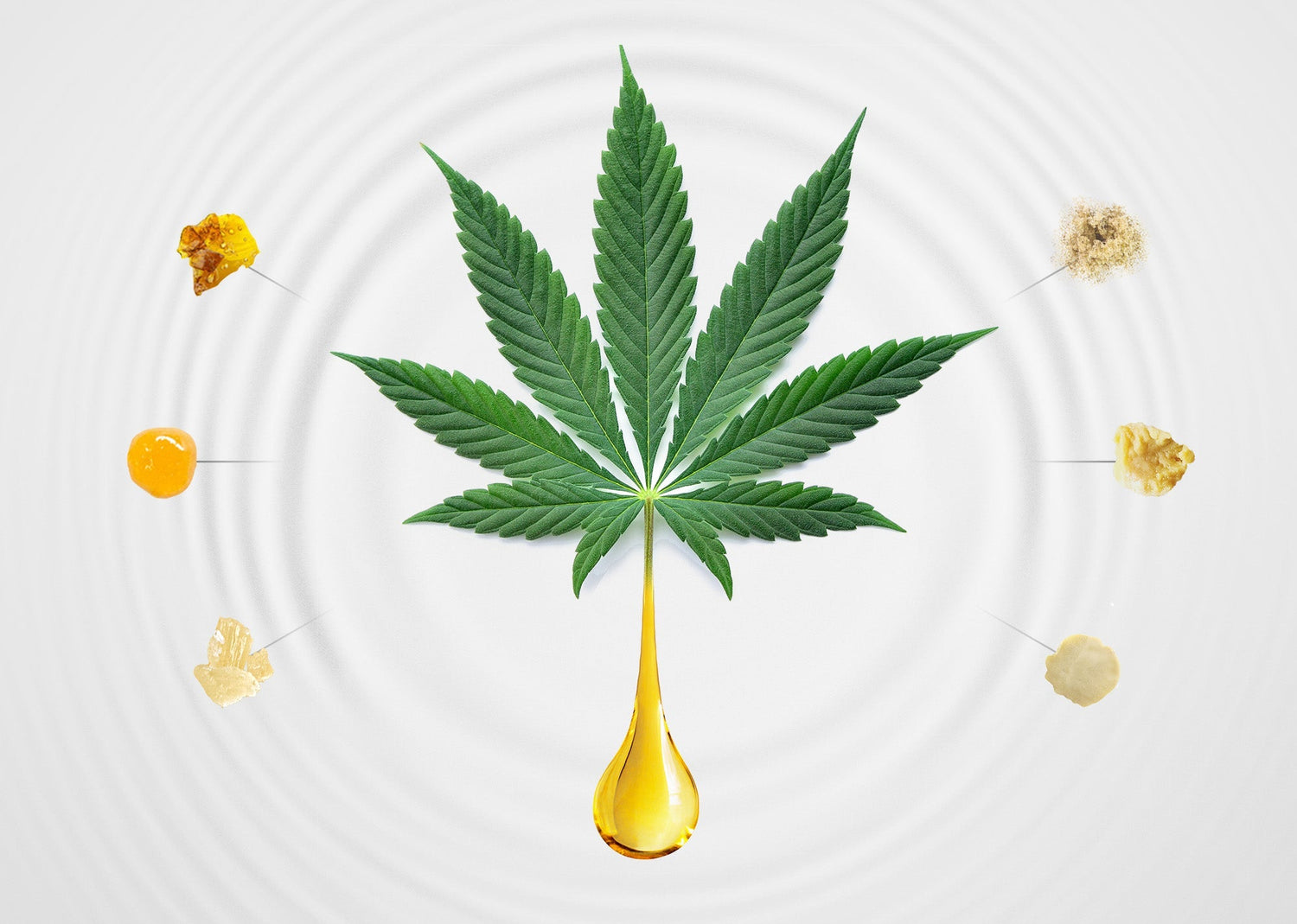
At Puffco we are committed to spreading the benefits of plant medicine and believe this will encourage a culture of compassion, inclusion, and deeper understanding. Through education, we can begin to break the stigma, lift the oppressed, and provide access to a higher state of mind, body, and soul.

Cannabis concentrates are a form of cannabis that have been extracted from the plant in order to isolate the most desirable parts, while removing impurities.
This makes concentrates the cleanest, most potent, and most flavorful form of cannabis. We are on a journey to share the magic of concentrates.
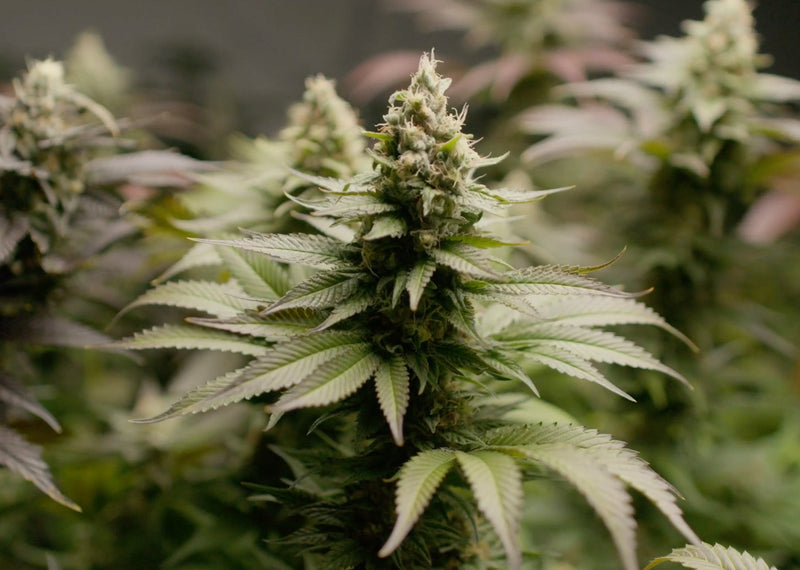
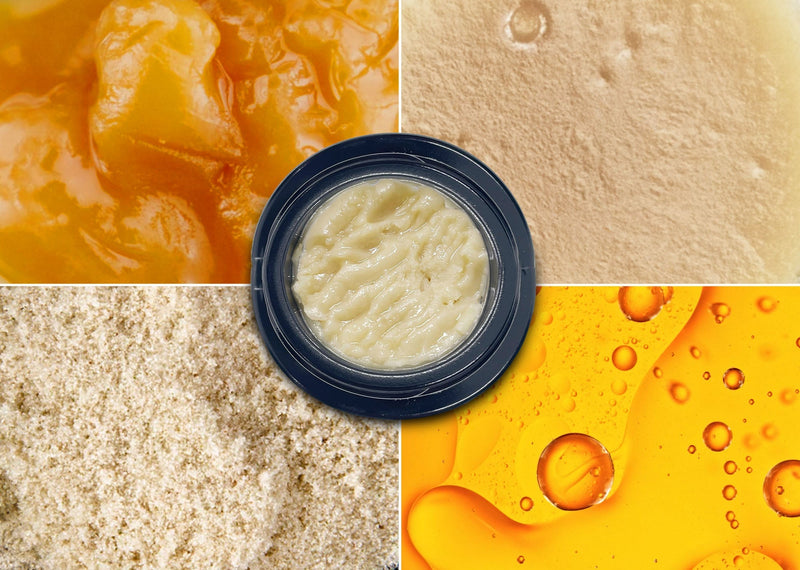
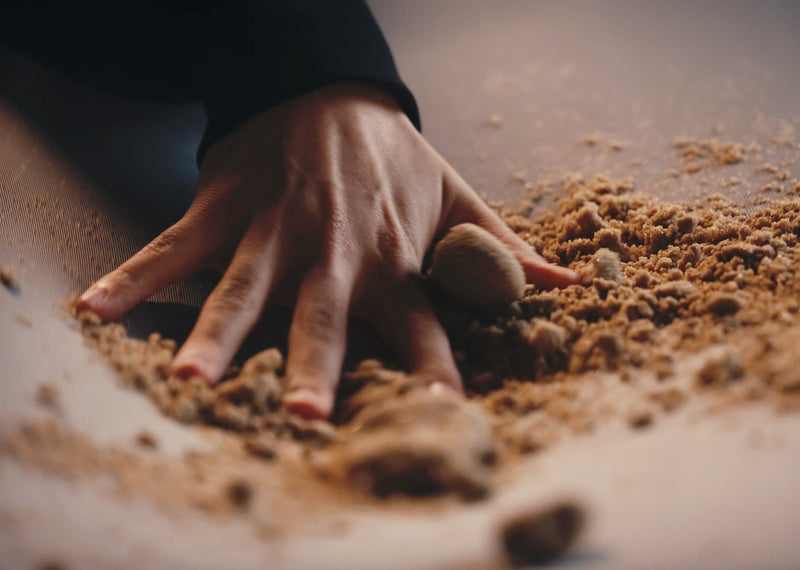
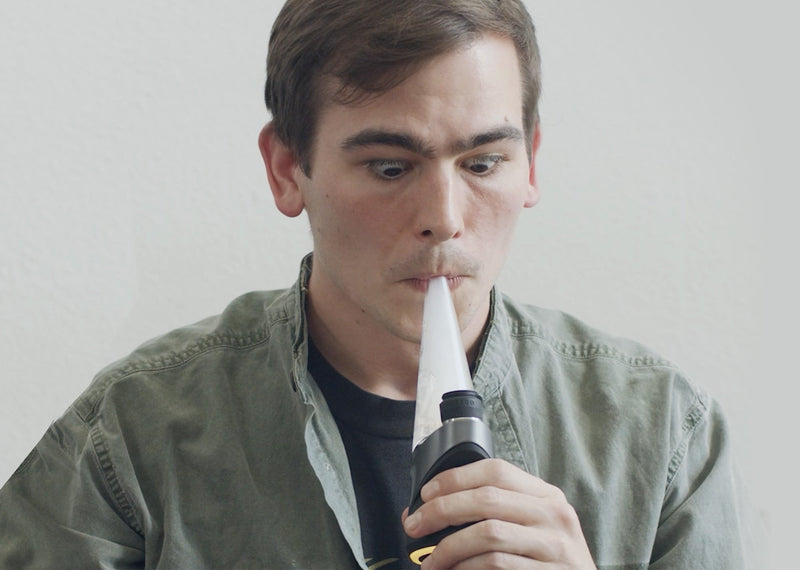
Hash –or hashish –is a concentrated cannabis product that has documented uses dating back centuries. It’s derived from trichomes –also known as kief –which are tiny, crystal-like structures covering the buds and leaves of the cannabis plant. These trichomes contain high concentrations of the plant’s cannabinoids and terpenes (such as THC and myrcene).
History & Use
The origins of hash can be traced back to ancient civilizations in Central Asia and the Middle East, where cannabis has been cultivated for thousands of years. These early cannabis enthusiasts discovered the resinous trichomes on the cannabis plant and began collecting it for its potent properties.
Throughout history, hash has been used for both recreational and medicinal purposes. In some cultures, it played a ceremonial role as incense or was consumed for spiritual and religious practices. Hash resin residue was found on altars inside a temple of the ancient kingdom of Judah, located in modern day Israel. In written record, one of the first mentions of hash is in a 10th century Iraqi text, Ibn Wahshiyya's Book of Poisons.
Creating Hash
The process of creating hash involves separating the trichomes from the plant material. In traditional methods, the harvested cannabis flowers were gently rubbed with bare hands or beaten to release the resin, which was then collected and pressed into a compact form. This method is commonly known as hand-rubbed hash or charas. The resulting brick, ball, or slab of hash can then be broken up into small pieces, placed into a pipe or water pipe, and smoked.
Over time, various techniques and tools were developed to refine the process of making hash. Methods like dry sifting, water extraction, and ice water extraction emerged, each producing unique textures, colors, and potencies of hash. These resulting in a wide range of hash varieties such as bubble hash, hash rosin, and more.
Hash can then be further refined via solvent or solventless methods for a wider variety of consumption options. One method applies pressure and heat to a brick of hash, resulting in rosin, a cannabinoid and terpene-rich concentrate that’s used most commonly for dabbing. Butane hash oil, or BHO, is another hash-derived concentrate made by using chemical solvents like butane or propane to pull the essential oils out of the plant material.
Between its various unprocessed forms like charas and Moroccan hash –which can be smoked –and more modern varieties like hash rosin and bubble hash –which can be vaporized –hash is gaining popularity around the world for its flavor, potency, and flexibility.
Hash is a concentrated cannabis product made by extracting and isolating trichomes from the plant material. Trichomes –also known as kief –are tiny, crystal-like structures that cover the buds and leaves of the cannabis plant, and they contain the plant's cannabinoids and terpenes.
There are several solventless methods for making hash, including hand-rolling, dry sifting, and ice water extraction, as well as solvent-based methods that use butane or alcohol. Each method produces a slightly different type of hash with unique characteristics.
Hand-rolling
Hand-rolling involves rubbing or rolling the buds and leaves between your hands to create a sticky resinous substance. This method is the simplest and most traditional way to make hash, but it's also the least efficient and produces the lowest yield of all the methods.
Dry sifting
Dry sifting involves using a fine mesh screen to sift the trichomes from the plant material. This method can be done by hand or with a machine, and produces a slightly higher yield than hand-rolling. The resulting hash is typically light brown or golden in color and has a powdery texture.
Ice water extraction
Ice water extraction involves using ice-cold water to separate the trichomes from the plant material. The mixture is then filtered through a series of screens to remove any remaining plant
Solvent-based extraction
Solvent-based extraction involves using a solvent like butane or alcohol to dissolve the trichomes from the plant material. The resulting solution is then filtered and the solvent is evaporated, leaving behind a sticky, resinous substance. This method can produce the highest yield of hash, but it also requires more equipment and expertise to ensure a safe and high-quality product.
There are several different types of hash that can be made using these methods:
Moroccan hash
Moroccan hash is one of the most traditional types of hash, made by hand-rolling the resinous substance until it forms small balls or patties. The resulting hash is typically dark brown or black in color and has a spicy, earthy flavor.
Bubble hash
Bubble hash is made using the ice water extraction method. The resulting hash is typically light brown or golden in color and has a powdery texture. It's often considered one of the purest and most potent forms of hash.
Butane hash oil (BHO)
Butane hash oil, also known as BHO, is made using a solvent-based extraction method. The resulting hash is typically amber or gold in color and has a sticky, resinous texture. BHO can be further refined into other types of concentrates like shatter or wax.
A dab rig is a specialized type of water pipe used for smoking cannabis concentrates, such as rosin, hash, or wax. These concentrates are placed on a hot surface, known as a nail, and the resulting vapor is then inhaled through the rig.
Different Parts of a Dab Rig
Types of Dab Rigs
Dabbing has gained popularity as a preferred method for consuming concentrates, but it can be a bit challenging for beginners. Fortunately, electronic dab rigs and e-nails offer a convenient solution, taking the guesswork out of traditional dabbing.
E-rigs are an excellent choice for people curious about dabs due to their ease of use – as well as longtime dabbers for their precision and customization options.
What is an e-rig?
An e-rig, short for electronic rig, is a modern device designed for consuming cannabis concentrates. It combines the convenience of an electronic vaporizer with the functionality of a traditional dab rig.
E-rigs serve as a substitute for traditional glass dab rigs, utilizing batteries or an electric outlet to maintain a consistent heating temperature for the concentrates. E-rigs have gained popularity among concentrate enthusiasts due to this consistent vapor production, portability, and ease of use.
Key components of an e-rig
1. Heating element:
2. Temperature control system:
3. Water filtration system:
How to use an e-rig?
Using an e-rig is fairly straightforward. Simply set the desired temperature on the device, wait a few minutes for it to heat up, and then add your cannabis concentrate to the chamber. With some e-rigs, like the Puffco Peak Pro or Proxy, the concentrate is loaded into the chamber before starting the heat cycle. Clean the chamber out after each dab to avoid reclaim buildup.
For best performance, be sure to clean your e-rig with 90% isopropyl alcohol regularly, taking care to let it dry completely before heating again.
Benefits of using an e-rig
1. Safer and controlled dabbing:
2. Portability and discretion:
3. Precise temperature control and customization:
Types of hash used with e-rigs
1. Rosin: Rosin is a solventless concentrate produced by applying heat and pressure to cannabis flower or hash. It's a popular choice for those seeking a pure and natural dabbing experience.
2. Wax: Wax is a softer and more malleable concentrate compared to shatter. It's easy to handle and provides a smooth dabbing experience.
3. Budder: Budder has a creamy consistency and is often whipped or buddered during the extraction process. It offers a flavorful and potent dabbing experience.
4. Live Resin: Live resin is made from freshly harvested cannabis plants, preserving the plant's natural flavors and aromas. It's known for its rich terpene profile and potent effects.
A dab pen, also known as an extract pen or concentrate pen, is a device used to consume cannabis concentrates. It's a small, portable, and discreet vaporizer that heats up the concentrate to produce vapor that can be inhaled. Most dab pens are made up of three components: a battery, a chamber with heating element, and a mouthpiece.
Components of a Dab Pen
How Does a Dab Pen Work?
Before using a dab pen, it's important to choose the right concentrate for your device. Some dab pens are designed for use with specific types of concentrates, such as rosin or wax. Using the wrong type of concentrate (like sugar or kief) can damage your device or result in a suboptimal vaping experience.
As mentioned above, some dab pens are equipped with temperature control, allowing users to adjust the temperature of the heating element to their liking. This allows for a more tailored experience and can prevent burning the concentrate, which can create a harsh taste and reduced potency otherwise.
Note: Some dab pens also use exposed coils in the chamber, which tend to burn out and need to be replaced. They can also contain glues and fibers which can be hazardous when heated and inhaled. This is important to consider when purchasing a vape pen for dabs. The Plus uses a ceramic chamber with no glues, fibers, or coils.
Advantages of Using a Dab Pen
Dab pens offer several advantages over traditional dabbing methods, like a dab rig and torch.
Dabbing is a popular method for consuming cannabis concentrates. It involves vaporizing your concentrate of choice and inhaling the resulting vapor. This step-by-step guide will walk you through the process of taking a dab, ensuring you get the most out of your dabbing experience.
2. Preparing Your Dab Rig
3. Applying the Cannabis
Hot-start dabs:
4. Inhaling the Vapor
Cold-start dabs
5. *Optional — Use a Carb Cap
6. Post-Dab Care
If you're using a Puffco device, taking a dab is easy:
***Remember, always start with a small amount and gradually increase as your experience how your body responds to the dab.***
Key Takeaways
Your dab temperature can make or break your experience. To achieve the perfect balance of flavor and vapor, aim for the lowest possible temperature that still allows you to achieve your desired effect.
While you may prefer higher dab temps, at Puffco, we generally recommend a range of 450°F to 550°F for the best hits. It's worth noting that higher temperatures may generate more vapor, but they can also degrade the flavor of your concentrate.
Other than having a high-quality dab rig, achieving the perfect dab comes down to finding the right temperature. If your dab temperature is too low, your concentrate may not vaporize completely, leading to a weaker hit and compromised flavor. If it’s too high, you risk destroying your concentrate's flavor profile.
Finding the perfect dab temp can be a tricky process. We recommend a temperature range of 450°F to 550°F for optimal results, but we recognize that preferences vary from person to person. To make an informed decision, consider the advantages and disadvantages of different dab temperatures.
Factors to consider when choosing dabbing temperature
There are a number of factors you should consider when it comes to choosing your perfect dab temp, including:
Low temperature dabbing (420-475°F)
While it may not produce large clouds of vapor or intense hits, low temperature dabbing preserves the delicate terpenes and cannabinoids in concentrate, leading to smoother hits with more flavor and less harshness. If you prefer a low dab temp, a carb cap can help regulate the airflow and vaporize the concentrate more evenly.
Medium temperature dabbing (475-550°F)
For many people, the perfect dab temp falls in the middle. Medium temperature dabbing offers the best of both worlds, creating a harmonious balance between flavor and potency. It preserves a good amount of terpenes while still producing enough vapor to achieve your desired effects.
High-temperature dabbing (550-650°F)
High temperature dabbing can result in bigger clouds and stronger hits, but it can also degrade the flavor profile of your concentrate. An excessive dab temperature can even lead to burnt or charred flavors and undesirable effects. Our rigs make it easy to ensure your dab temp doesn’t exceed 650°F. The Peak Pro features a sensor embedded inside the chamber, keeping your temperature exactly where it needs to be.
Key Takeaway
To fully enjoy your dabbing experience, selecting the best dab rig that works for you is essential. Consider various factors such as dabbing frequency, flavor, vapor quality, heating range and duration, ease-of-use, customizability, portability, ergonomics, aesthetics, and price to find the perfect fit for you.
Dab rigs are designed specifically for the consumption of cannabis concentrates, including wax, shatter, and oil. Compared to traditional smoking methods, dabbing provides more flavor and aroma, a faster onset of positive effects, and smoother, cleaner hits. The best dab rigs also offer the ability to customize and tailor your smoking experience to your unique preferences through the addition of different accessories, such as nails, carb caps, and atomizers.
With so many options available on the market today, finding a dab rig that checks all of your boxes can seem daunting, but don't worry, we've got you covered. Keep reading as we take you through key factors that will help you decide which dabbing device is best for you, including portability, dabbing frequency, ergonomics, and more.
What are the different types of dab rigs, and which one is best?
Dabs rigs can be broken down into three main types based on their design and functionality: heady, functional, and e-rigs.
Although each type of dab rig has its own unique advantages and disadvantages, it's important to note that there isn't necessarily a "one-size-fits-all" dab rig. However, e-rigs can provide a balance of convenience, performance, and portability, making them the best dab rig option for many.
What should I look for in a dab rig?
There are several factors you may want to consider when you’re looking for the best dab tools, including:
How much should I expect to spend on a high-quality dab rig?
High-quality dabbing equipment is worth the price to enhance your experience. Our industry-leading e-rigs offer the cleanest, simplest, and most flavorful consumption experience available without glues, fibers, or chemicals.
Dial in the exact experience you are looking for with our collection of the best dab tools and cannabis essentials.
Key Takeaways
To enhance your dabbing experience, consider investing in the highest quality extracts that are within your budget and easily accessible. The quality of the extracts you use plays a crucial role in the overall taste, potency, and effects of your dabbing session.
In extracts, the key to quality lies in the starting material, so always look for reputable cultivators who use sound practices to produce high-terpene cannabis. Generally speaking, live extracts are higher in quality than their cured counterparts. Among connoisseurs, live solventless hash is especially sought after.
Cannabis concentrates, also known as cannabis extracts, are highly potent forms of cannabis produced by isolating the plant’s active compounds — terpenes and cannabinoids — from its impurities and extra plant materials. While concentrates can be enjoyed as topicals and edibles, they are especially well suited for dabbing, which provides a more intense and immediate effect.
With so many different cannabis concentrates on the market, from solvent-based varieties like butane hash oil to solventless varieties such as rosin, it can be tricky to choose the right concentrate for dabbing. Here’s what you should keep in mind to find exactly what you’re looking for.
When it comes to dabbing, the quality of your extract sets the foundation for a satisfying experience. To get the best possible results, prioritize the highest-quality product that fits within your budget. Other factors to consider include:
Desired effects
Before selecting an extract for dabbing, consider the type of experience you desire. This initial step will help guide your choice of extract and ultimately lead to a more satisfying dabbing experience.
Different extracts pack varying levels of cannabinoids and terpenes, which can produce a whole range of effects on the mind and body. For an elevated and euphoric sensation, try an extract with concentrated THC . If you're looking for a more mellow and therapeutic outcome, then an extract with higher CBD content may be the way to go.
Consistency
Consistency makes a world of difference in terms of dabbing. While diamonds are visually appealing and high in potency, shatter and wax concentrates are easier to handle and manipulate.
Extraction method
The extraction method used to produce cannabis concentrates can impact its flavor, aroma, consistency, and more.
Solvent-based methods can result in highly concentrated extracts with a wide range of consistencies, but solventless extraction is seen as a more natural and environmentally friendly process.
Choosing between live and cured extracts comes down to how you want to preserve your cannabis plant's unique qualities before extracting its goodness.
Live extracts are created by capturing the cannabis plant's essence at its freshest. Freshly harvested cannabis plants are immediately flash-frozen, preserving their delicate terpenes to create an extract that's highly aromatic and flavorful.
Cured extracts, on the other hand, are produced from cannabis that has been dried for a period of time. During this time, the buds undergo a natural breakdown and aging process that can lead to a smoother and more mellow taste.
Overall, live extracts are considered higher quality than cured extracts, but the choice between the two ultimately comes down to personal preference.
While it's true that cannabis concentrates come in many varieties, each with their unique potency, flavor, and effects, live solventless hash has earned a reputation as a top choice among connoisseurs seeking a high-quality and flavorful experience.
Made from freshly harvested cannabis plants and extracted using a pure and natural method that does not involve the use of solvents or chemicals, live solventless hash is a preferred choice for those who prioritize purity and naturalness in their cannabis products. If you want to experience the best of cannabis concentrates, make sure to check out our collection of dab rigs and other cannabis essentials.
Terpenes are organic compounds found in many plants, including cannabis. These aromatic molecules play a vital role in the plant's survival, attracting pollinators and acting as a natural defense against predators.
In cannabis, terpenes are responsible for the unique flavors and aromas of different strains, and they also work in tandem with cannabinoids to produce enhanced therapeutic effects.
The entourage effect refers to the synergistic interaction between cannabinoids, terpenes, and other compounds found in cannabis. Research is showing that these compounds produce enhanced benefits when experienced together –as opposed to each isolated component working on its own.
While THC and CBD are the most well-known cannabinoids, researchers have identified over 100 different cannabinoids –such as CBN and CBG –and more than 200 unique terpenes in cannabis. These compounds work together to produce the plant's overall effects, including pain relief, anxiety reduction, and anti-inflammatory properties.
Think of cannabis as an airplane. The cannabinoids put you in the air, and the terpenes steer the plane once you’re up there. Terpenes play a significant role in the specific direction of the cannabis experience.
The popular indica/sativa spectrum for categorizing cannabis strains as either energizing or sedating is overly simplistic and inaccurate. Research indicates terpenes –in tandem with cannabinoids –contribute much more to a strain's unique effects than its classification as an ‘indica’ or ‘sativa’. In fact, some ‘sativa’ strains have high levels of the terpene myrcene and actually feel quite sedating, while some ‘indica’ strains contain high levels of limonene and feel uplifting and energetic.
Terpenes are a crucial component ot he cannabis plant, contributing to each strain’s unique aroma and flavor profiles, as well as its therapeutic effects. The entourage effect highlights the importance of the interaction between terpenes and cannabinoids in enhancing the whole plant's overall effects. While the indica/sativa spectrum has been popular for categorizing strains, terpenes play a far more significant role in the overall cannabis experience. By understanding the various terpene benefits found incannabis, consumers can make more informed decisions about their wellness and the strains they choose.
Dabbing has grown in popularity over recent years as an alternative method of consuming cannabis concentrates. One common question that arises is whether dabbing is more discreet than smoking flower.
In essence, dabbing involves vaporizing concentrated forms of cannabis using a dab rig or similar device. Compared to smoking flower, dabbing can offer certain advantages in terms of discretion for several reasons:
Vapor vs. Smoke
Dabbing involves vaporizing concentrated cannabis extracts rather than combusting the plant material. Vapor dissipates more quickly than smoke and leaves behind minimal visible residue or smoke clouds. This reduced visibility makes dabbing a potentially more discreet option, especially in situations where discretion is necessary, such as in public or shared spaces.
Minimal Odor
When dabbing concentrates, the vapor produced tends to have a milder aroma compared to the pungent smell of burning cannabis flower. Dabbing emits less lingering odor, making it less noticeable and easier to manage in terms of discretion. However, it's important to note that concentrates can still have a distinct scent, especially when using high terpene extracts.
Smaller Devices
Dabbing typically involves using smaller and more compact devices such as dab pens or electronic rigs (e-rigs). These devices are designed to be discreet and portable, allowing users to enjoy their concentrates without drawing much attention. Their compact size makes them easier to conceal and carry discreetly compared to traditional smoking gear like pipes or bongs.
Noise Level
Unlike smoking flower, which involves the sound of combustion, dabbing is generally quieter. Electric dab rigs and dab pens produce minimal noise, if any, during the vaporization process. This feature can further enhance the discreetness of dabbing, particularly in situations where noise could attract unwanted attention.
Social Perception
Dabbing has gained popularity within cannabis communities, and its social acceptance continues to grow. Many enthusiasts appreciate the enhanced potency and flavor profiles of concentrates. However, outside these circles, dabbing may still be relatively unfamiliar to the general public. This lack of awareness can contribute to dabbing being perceived as a less conspicuous method of cannabis consumption compared to smoking flower, which has a more established presence and recognizable aroma.
It's important to note that the level of discretion ultimately depends on various factors, including the environment, personal habits, and the specific concentrate being used. While dabbing offers certain advantages in terms of discreetness, it's still essential to be mindful of one's surroundings, local regulations, and social norms to ensure responsible and respectful consumption.
Key Takeaways
The true magic of cannabis lies within the entourage effect, which refers to the complex interaction between the plant's various compounds, such as cannabinoids and terpenes. Together, these compounds create a more powerful and beneficial effect than any could achieve alone.
Instead of focusing solely on high THC content, experience the full benefits of cannabis by seeking out full-spectrum products and take your smoking experience from good to unforgettable.
The entourage effect is a phenomenon that occurs when the various compounds found in the cannabis plant, such as cannabinoids and terpenes, work in harmony to produce enhanced positive effects. It is believed to be responsible for many of the therapeutic benefits associated with cannabis use, including pain relief, reduced inflammation, improved mood and more.
How does the entourage effect apply to cannabis use?
Many cannabis users consider a product’s high THC content to be an indicator of its quality, overlooking the importance of the entourage effect. To experience the complete therapeutic potential of cannabis and amplified positive effects, look for full-spectrum products that feature both cannabinoids and terpenes to use with your vaporizer or water pipe.
One way to think about the relationship between cannabinoids and terpenes is to imagine a symphony orchestra. Cannabinoids can be compared to the various instruments in the orchestra, each playing a unique role in creating the overall sound. Terpenes, on the other hand, are like the conductor of the orchestra. They don't produce sound on their own, but they play a crucial role in directing the overall experience.
Overall, the entourage effect doesn't directly impact how you consume cannabis, but having a better understanding of it can inform your approach to cannabis use.
What are the benefits of the entourage effect?
The key benefit of the entourage effect is that it unlocks the full therapeutic potential of cannabis. As the different compounds of the plant work together in synergy, the resulting effects are more powerful and effective. This is particularly true for full-spectrum cannabis products, which may offer better relief for a broader range of conditions compared to products that contain isolated compounds. Overall, the entourage effect may help with:
What factors influence the entourage effect?
There are several factors that can influence the entourage effect, including:
Key Takeaway
"Sativa" and "indica" are often used to describe the subjective effects of cannabis as "uplifting" and "relaxing", respectively. In reality, cannabis can affect individuals very differently, making the experience highly personalized. While the sativa/indica framework is useful in budtender conversations, it is a relatively unscientific way to categorize cannabis.
Cannabis products are often marketed and categorized into three main groups: indica, sativa, and hybrid. Initially the terms "indica" and "sativa" were used to distinguish between cannabis that grew in tropical zones (sativa) and cannabis that grew in colder, higher areas (indica). Today, these terms are often used by retailers and consumers to describe the general effects of a product.
When it comes to distinguishing between indica and sativa, physical characteristics of the plant are often used as a key factor. Indica plants are shorter and bushier with wider leaves, while sativas are taller with narrower leaves due to their natural adaptations to their environments.
While physical characteristics do not reliably indicate a strain's effects or potency, they can help consumers identify their preferences based on personal experience.
Although sativa strains are often associated with a more uplifting experience, and indica strains with relaxation, it's important to note that these classifications are not necessarily rooted in scientific evidence. The effects of cannabis are highly individualized, extending beyond the simple “this or that” often used when discussing cannabis effects — such as body or mind high.
Traditionally, these effects were attributed to whether the strain was considered an indica, sativa or hybrid. However, these effects actually vary based on each plant's chemical makeup of cannabinoid and terpene levels. Consumers may respond differently to the same strain as a result of personal chemistry.
The effects of cannabis strains are shaped much more by the unique combination of cannabinoids and terpenes present in each plant than whether or not it's labeled indica or sativa.
While understanding the chemical makeup of a strain is important, it is also necessary to consider that personal biology can impact the response. Two people may have completely different experiences smoking the same strain due to their individual chemistry.
As research continues, it will be essential to explore the interplay between cannabinoids, terpenes, and individual biology to develop targeted and effective cannabis experience.
What does indica "feel" like?
While individual experiences may vary, consumers may find that indica strains are generally more sedating and calming than other types of cannabis.
The effects of indica strains are often associated with relaxation or a "body high," making them popular for sleep aids, pain relief, and unwinding after a long day.
What does sativa "feel" like?
Sativa strains are often associated with an energizing, uplifting effect frequently referred to as a "mind high." This strain may enhance alertness and creativity, making it a popular choice for daytime use.
Why do terpenes and cannabinoids matter more than indica, sativa and hybrid strains?
The effects of different cannabis strains can vary widely from person to person and depend on individual factors. As a result, the cannabis industry is moving away from the broad categories of indica and sativa and instead focusing on the unique profiles of terpenes and cannabinoids.
Terpenes determine cannabis' taste and smell, while cannabinoids (like THC and CBD) determine its effects. Together, they create a unique profile for each strain, offering various medicinal and recreational uses.
The combination of these compounds offers a wide range of therapeutic and recreational options for consumers. Understanding the unique properties of each strain can help individuals choose the best option for their needs. As research continues to uncover more about cannabis, it is clear that both terpenes and cannabinoids play a significant role in its overall effects and profile.
The cannabis experience is multidimensional, and its effects vary from product to product. Cannabis plants contain over 100 different cannabinoids and more than 150 terpenes, each of which can influence the effects of the plant in different ways. As the discussion of cannabinoids and terpenes grows, more consumers are shifting their focus to full-spectrum cannabis.
Full-spectrum cannabis refers to cannabis products that contain a wide range of cannabinoids, terpenes, flavonoids, and other compounds naturally present in the cannabis plant. Full-spectrum cannabis products aim to provide a more comprehensive and holistic experience than products made with isolated compounds.